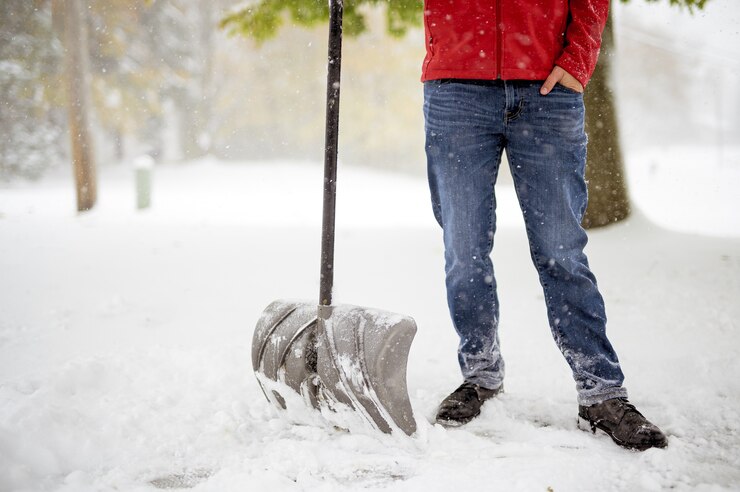As winter approaches, giving your garden the care it needs prepares it for the colder months ahead. A thorough winter cleanup helps protect plants and lay the groundwork for a thriving garden come spring. Taking deliberate steps now can prevent disease, manage pests, and improve the overall health of your garden.
Getting rid of debris and pruning dead branches helps keep your garden tidy and reduces spots where pests can gather. Focus on clearing areas to give plants room to breathe and grow stronger in the months to come. Proper winter prep also involves caring for your soil to ensure it remains rich and ready for new growth in the spring.
Winter can be tough on plants, with frost and snow posing risks to their well-being. Protecting plants is crucial to maintaining their health and preventing damage. Additionally, tending to your garden tools and structures now ensures that everything is in top shape for use when warmer weather returns. This attention to detail keeps your garden resilient throughout the winter, making springtime gardening a rewarding experience.
Clearing Debris and Pruning Dead Branches
A thorough cleanup is the first step to a healthy garden in winter. Start by clearing all debris from your garden. Fallen leaves, dead plants, and weeds can harbor pests and diseases that might harm your garden as temperatures drop. Removing this debris reduces the chance of infestations and rot, setting the stage for a clean garden ready to withstand winter’s chill.
Focus on pruning as part of this process. Prune dead or diseased branches from shrubs and trees to promote healthy growth in the spring. Use clean, sharp pruning shears to make clean cuts, which help prevent disease spread. Some plants, like roses or certain perennials, benefit from a more aggressive trim, while others require a gentler approach. Knowing each plant’s needs ensures proper care and maximizes health.
Consider using debris for composting instead of disposal. Leaves and healthy plant material contribute to making valuable compost for future gardening needs. Separate diseased plants to avoid contamination of your compost pile. This eco-friendly approach turns debris into a resource rather than waste.
Finally, tidy up the edges of garden beds and paths. Neat borders and clear paths contribute to a visually pleasing space that’s ready for the next planting season. Managing garden debris and pruning strategically helps maintain a garden that’s both attractive and healthy through winter.
Improving Soil Health with Mulching and Composting
Good soil health is essential for your garden’s resilience during winter. Start by adding a layer of mulch to your garden beds. Mulch acts as insulation, protecting roots from extreme cold and helping to retain moisture in the soil. Choose organic materials like straw, wood chips, or bark, which gradually break down and enrich the soil. Apply mulch evenly, about 2 to 3 inches thick, avoiding direct contact with plant stems to prevent rot.
Composting is another great way to improve soil health. Add garden debris, kitchen scraps, and other organic materials to a compost bin. Layer green materials, like fruit peels and grass clippings, with brown materials, like dried leaves and small branches. This mix aids in breaking down materials effectively, resulting in rich compost you can later use to nourish your garden. Turn your compost pile regularly to speed up the decomposition process.
Testing your soil before winter gives insight into its nutrient content. Consider conducting a simple soil test to check pH levels and nutrient availability. With this information, you can amend the soil accordingly. Add lime if the pH is too low or sulfur if it’s too high, based on the test results.
Improving the soil with mulch and compost not only provides protection and nourishment but also sets the foundation for a healthier garden come spring. These practices enhance the resilience and vitality of your plants, ensuring a lush and productive garden season after season.
Protecting Plants from Frost and Snow
Frost and snow can pose serious threats to your garden plants during winter. Protecting them properly is essential to ensure they survive the cold months. Start by covering sensitive plants with burlap or frost cloths before the first frost hits. These coverings act as blankets, trapping warmth from the soil and protecting plants from freezing temperatures.
For perennials, apply a thick layer of organic mulch around the base. Mulch helps insulate the ground, keeping roots warm and reducing the risk of frost damage. Avoid using plastic covers, as they trap excess moisture and can lead to rot or fungal diseases.
Consider using cloches for individual plants or smaller shrubs. These bell-shaped covers shield plants from harsh weather while allowing sunlight in. Cloches are particularly useful for delicate flowers or vegetables that need extra care.
If snow accumulates, gently brush it off branches to prevent them from breaking under the weight. Take care to do this delicately to avoid damaging the plant. While snow offers some insulation from freezing winds, heavy snow can become too much for weak branches.
Finally, check on your plants regularly throughout the winter. Look for signs of damage or stress and address them quickly. This proactive approach ensures that your plants remain healthy and resilient against winter challenges.
Preparing Garden Tools and Structures for Winter
Taking care of garden tools and structures prepares your garden for winter and beyond. Begin by cleaning all your tools thoroughly. Remove dirt and rust with a wire brush and lightly oil metal parts to prevent rusting over the winter. Store them in a dry, sheltered place to ensure they remain in good condition.
Garden structures like trellises, fences, and raised beds also need attention. Inspect them for damage or weakness, tightening loose screws and replacing broken parts. A robust structure provides better support and protection during winter storms.
If you have a greenhouse, clean the glass and check the seals to ensure maximum insulation and light transmission. Fix any broken panels, and test the ventilation to prevent humidity from damaging plants or spreading disease.
Drain garden hoses and store them indoors to prevent cracking. Check any irrigation systems and drain them if possible to avoid damage from frozen water.
Taking these steps keeps your garden tools and structures in prime condition, ready for action when spring arrives. Maintaining them helps keep your gardening routine smooth and efficient year after year.
Conclusion
Getting your garden ready for winter involves careful planning and attention to detail. Clearing debris, improving soil health, protecting plants from frost, and preparing tools and structures all contribute to maintaining a healthy garden. With the right preparations, your garden not only survives the winter but thrives once warmer weather returns.
Winter care transforms your garden into a space that’s ready to bloom in spring. By taking these steps, you nurture a garden environment that’s resilient and full of life. It’s a reflection of the commitment and understanding you bring to your landscaping efforts.
Transform your winter garden preparation into effortless success with Bright Green Landscapes Inc. Our team is ready to offer expert advice and services tailored to your needs, ensuring your garden receives the best care through winter. Contact our landscapers in Elgin today for personalized landscaping solutions that keep your outdoor space vibrant all year.







